Most of us sat cross-legged as kids without thinking twice. It was natural, easy, and comfortable. Over time, though, we traded floor-sitting for chairs and couches—and with that, lost a surprisingly beneficial habit. Now, experts are rediscovering the health perks of this simple posture. Sitting Indian style can improve posture, increase flexibility, and support overall well-being.
Key Takeaways:
- Sitting Indian style offers several benefits, including improved posture, increased flexibility, and enhanced core strength, supporting both physical and mental well-being.
- Cultural, spiritual, and yoga traditions recognize this posture for its grounding and meditative benefits.
- Alternatives and adaptations are available for those with joint or mobility issues.
In this article, we’ll break down how returning to this natural way of sitting can help your body feel better, move better, and function better.
The Basics of Sitting Indian Style
Indian style sitting, commonly known as sitting cross-legged on the floor, gets its name from traditional practices in India where this posture is widely used in daily life, prayer, and meditation. In yoga and spiritual traditions, this way of sitting is believed to encourage calmness, focus, and a deeper connection to the body and mind. While similar cross-legged positions exist in many cultures, the term “Indian style” became popular in the West to describe this specific seated posture often associated with Eastern practices. It’s a simple yet meaningful position that promotes stillness, grounding, and mindfulness.
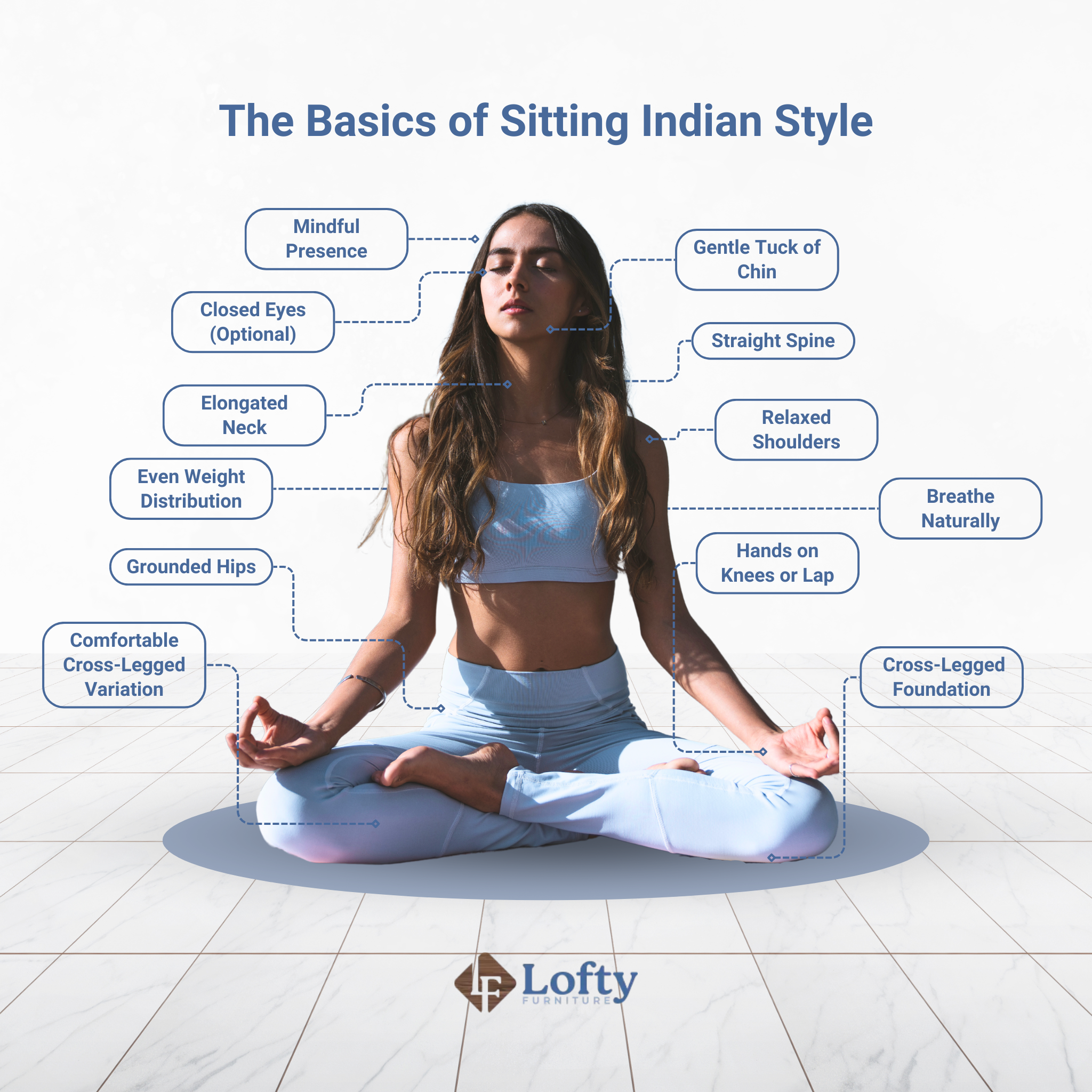
Variations Across Cultures
Cultural diversity is beautifully reflected in the way people sit around the world. From Japan’s seiza position to Morocco’s cross-legged style, body positioning during sitting varies widely. These customs often have historical origins rooted in tradition and social norms.
While Indian style sitting, or sukhasana, is commonly practiced in India and other parts of South Asia, similar variations can also be found in Native American cultures. The basic idea of sitting cross-legged is common, but there can be subtle variations in how people practice it based on cultural and individual preferences. Here are a few variations:
- Sukhasana (Easy Pose): This is a simple cross-legged position where one ankle is placed in front of the other. The knees are wide apart, and the hands can rest on the knees or in the lap.
- Ardha Padmasana (Half Lotus Pose): In this variation, one foot is placed on the opposite thigh, while the other foot is under the opposite thigh. It is a preparatory posture for the full Lotus Pose.
- Padmasana (Lotus Pose): This is an advanced sitting posture where both feet are placed on the opposite thighs.
- Muktasana (Liberation Pose): Similar to Sukhasana, but with the hands clasped behind the back.
- Baddha Konasana (Bound Angle Pose): In this seated pose, the feet are brought together, and the knees are opened to the sides, forming a diamond shape. It is sometimes referred to as the Cobbler’s Pose.
These variations showcase the adaptability of Indian-style sitting, allowing for different levels of comfort and flexibility. The choice of sitting posture can depend on personal convenience, physical limitations, or specific purposes such as meditation or yoga.
Cultural and Spiritual Significance
Sitting in different positions holds deep cultural significance in many societies, representing traditions, rituals, and values passed down through generations. For example, in some Asian cultures, sitting cross-legged is a sign of respect and humility.
The Indian-style sitting holds cultural and spiritual significance in various traditions, especially in India. Indian-style sitting is a foundational posture in yoga and meditation. It allows for a stable and comfortable position for extended periods of meditation and introspection.
The cross-legged position promotes energy flow (prana) through the body in yoga and meditation. It is thought to create a harmonious balance of energy, enhancing the overall wellbeing of an individual.
Some spiritual traditions associate cross-legged sitting with the alignment of the body’s energy centers or chakras. The posture facilitates energy flow through the spine, promoting spiritual awakening and balance.
Physical Benefits of Sitting Indian Style
When sitting in the Indian style, also known as the cross-legged position, you can experience several physical benefits.
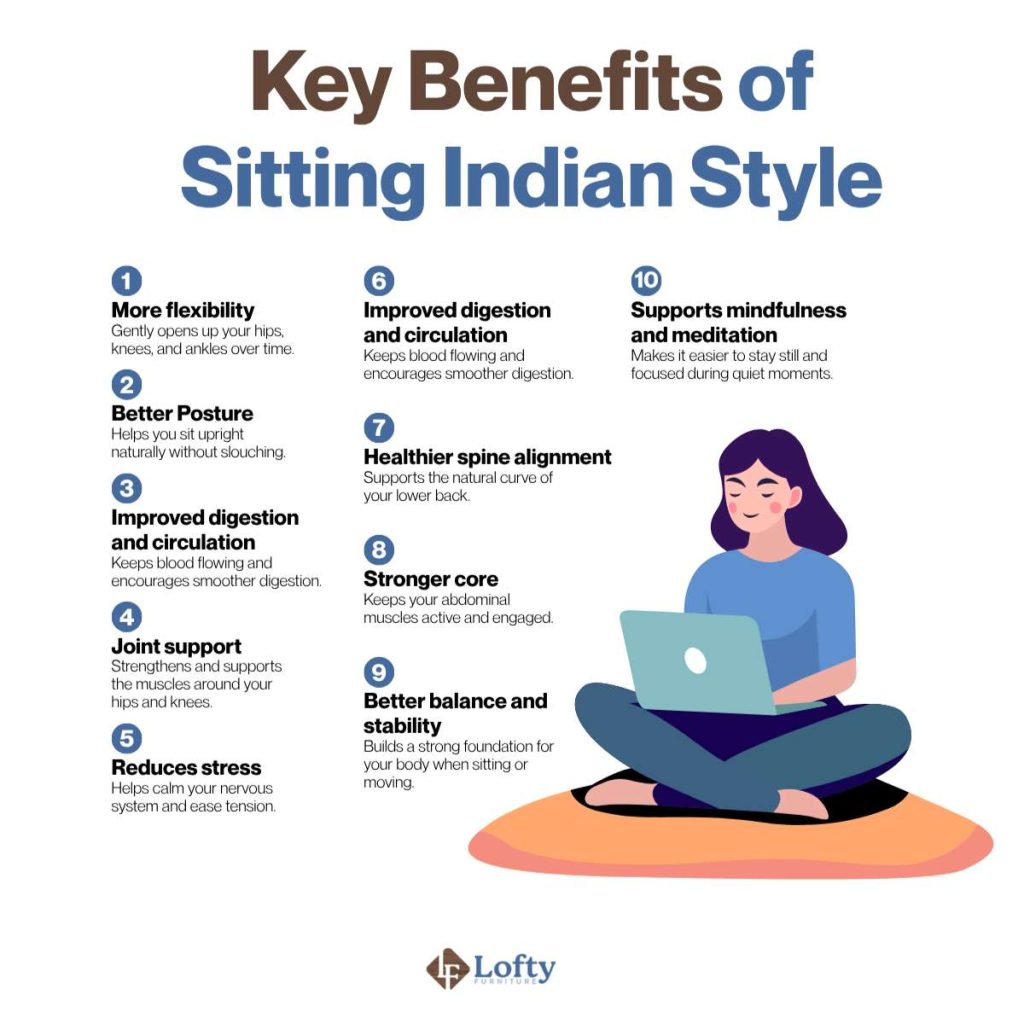
Break free from the static desk life.
Our innovative setups support movements and flexibility, so you can stay focused, feel better, and keep pace with your day. Shop walking pads now.
1. Improved Posture
Improved posture is one of the key benefits of sitting in the Indian style. When you sit in this position, your spine naturally straightens, reducing the strain on your back muscles and promoting optimal spinal alignment.
This seating style improves your posture and helps alleviate back pain caused by poor posture habits. It also promotes flexibility by stretching the hips, knees, and ankles.
2. Impact on Spinal Alignment
Not only does sitting cross-legged enhance your posture, but it also significantly impacts the alignment of your spine. When you sit in this position, your spine naturally aligns itself into a more neutral and upright position, which helps to alleviate any strain or tension that may have been placed on it from prolonged sitting in other positions.
This improved spinal alignment promotes better back health but also aids in correcting poor posture over time. Sitting with crossed legs provides you with built-in lumbar support, as the muscles surrounding the lower back are engaged and strengthened.
3. Digestion and Circulation
Sitting in a cross-legged position helps to improve digestion by putting gentle pressure on your abdomen. This pressure stimulates the digestive organs, improving digestion and reducing bloating.
Additionally, sitting in this position increases blood flow throughout your body. The crossed legs create a natural compression that encourages blood circulation, preventing blood pooling in your lower limbs.
4. Enhanced Flexibility
Sitting Indian style can provide enhanced flexibility and numerous benefits for your body. By regularly practicing this sitting position, you can experience improved mobility and increased range of motion in your hips, knees, and ankles. This can improve balance as it strengthens the muscles surrounding these joints.
Additionally, sitting in the Indian style encourages better posture by engaging the core muscles and reducing stiffness in the back. Incorporating this simple yet effective practice into your daily routine can help you promote your physical wellbeing and flexibility.
5. Effects on Hip and Knee Joints
Experience increased mobility and range of motion in your hip and knee joints, allowing for better balance and strengthening surrounding muscles. When sitting Indian style, you engage your hip flexors, which can improve hip flexibility.
This sitting posture encourages proper body alignment, reducing the strain on your joints. Maintaining this position can help promote joint health in your hips and knees. Additionally, getting into this position requires effort from the muscles around your hip and knee joints. Over time, this can improve strength and stability in those areas.
6. Core Strength
Sitting Indian style can contribute to improving core strength through several mechanisms. Maintaining an upright and aligned posture while sitting cross-legged requires engagement of the core muscles. The muscles in the abdominal region and lower back support the spine in a straight and stable position.
The act of sitting cross-legged also involves isometric contractions of the core muscles. Isometric exercises involve contracting muscles without significant movement. Holding the spine in a stable position against gravity in this seated posture challenges the core muscles, leading to improved strength over time.
7. Contribution to Overall Stability
A strong core is essential for maintaining overall stability in various physical activities. It allows you to perform movements with greater control and efficiency. When sitting Indian style, it engages your core muscles, helping to improve your body alignment and overall stability.
Sitting in this position requires balance and activates deep abdominal muscles, strengthening the core. A strong core improves your posture and supports healthier circulation and digestion. This leads to improved overall stability in other physical activities as well.
Key Benefits on Mental and Emotional Wellbeing
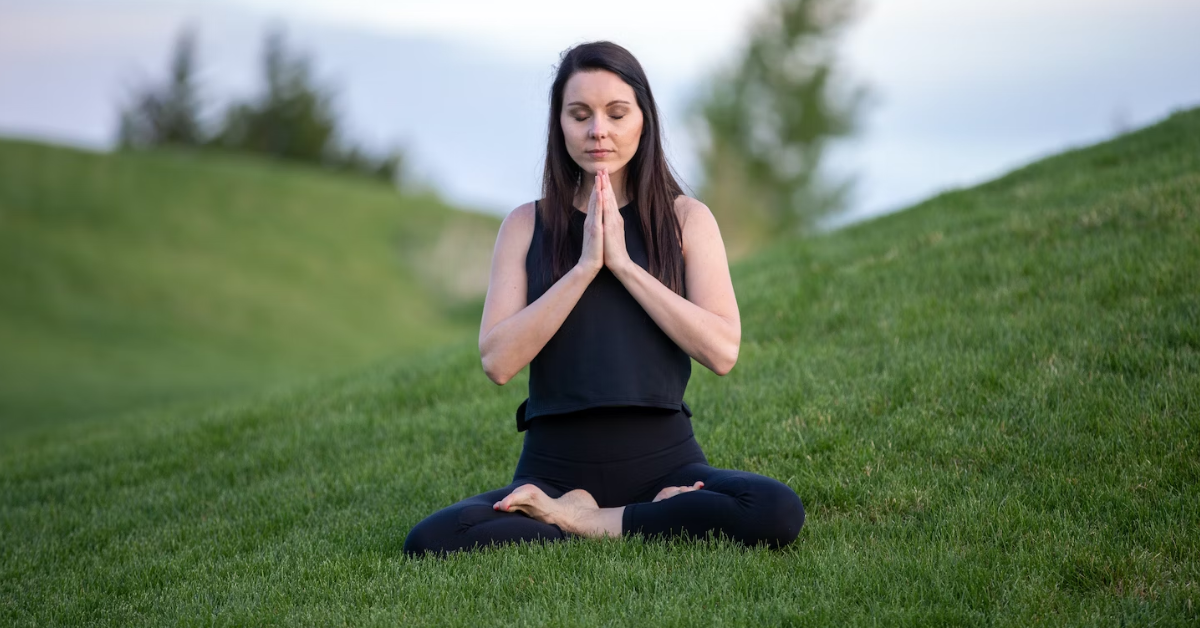
When sitting in the Indian style, you can experience various mental and emotional benefits. One key benefit is the practice of mindfulness and meditation, which can help you become more aware of your thoughts and emotions.
1. Mindfulness and Meditation
Practicing mindfulness techniques like focused breathing while sitting Indian style can do wonders for your mental and emotional well-being. Regular meditation in this posture helps reduce stress and anxiety, boosts self-awareness, and even improves sleep and focus. It’s a simple habit that creates space for calm, compassion, and emotional clarity.
2. Cultivation of Focus and Presence
Sitting Indian style naturally encourages a straight spine and grounded posture, which helps signal to your body and mind that it’s time to focus. This seated position is often used in mindfulness and yogic practices because it enhances the mind-body connection and promotes a sense of presence and stability in the moment.
3. Stress Reduction
Sitting cross-legged while tuning into your breath can help ease anxiety and clear your mind. It activates your body’s natural relaxation response and creates emotional balance. The next time stress creeps in, try sitting in this posture; it’s a small move that can bring big emotional relief.
4. Relaxation of the Nervous System
Deep breathing while sitting Indian style supports your parasympathetic nervous system, which helps your body relax and recover from stress. Regular practice can improve concentration, reduce tension, and create a peaceful reset for your nervous system, all from a grounded and comfortable position.
Practical Tips for Sitting Indian Style
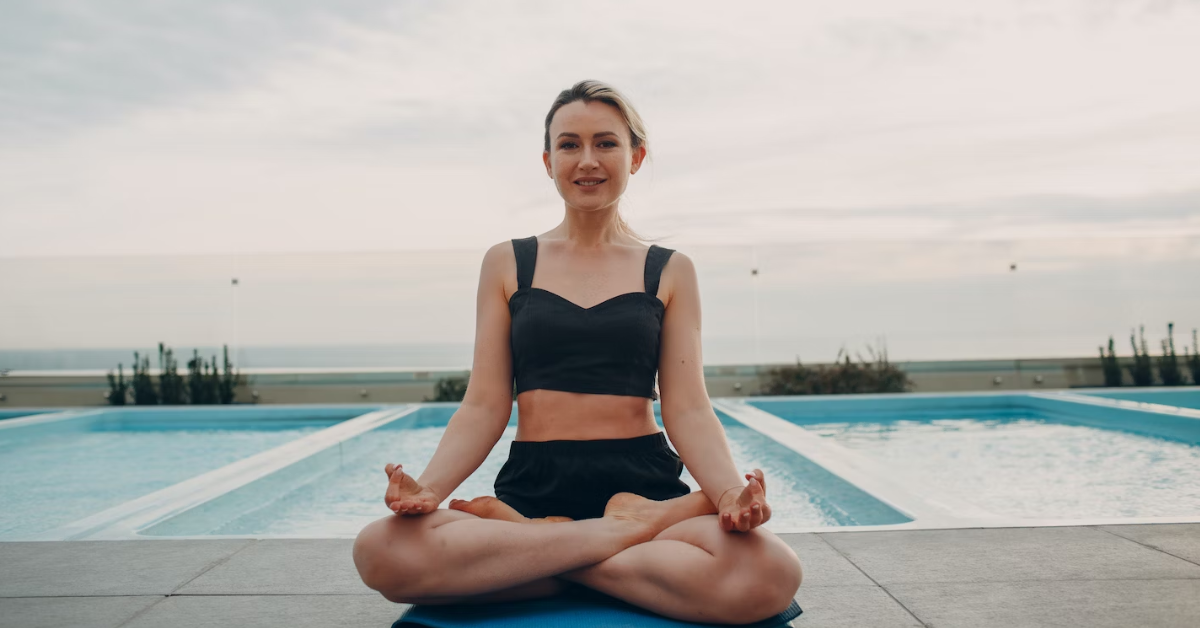
When preparing the space for sitting Indian style, choosing a quiet and comfortable area where you can sit without distractions is essential. Gradual incorporation is vital when starting this practice, as your body may need time to adjust to the new position.
Preparing the Space
First, clear a comfortable space for yourself to sit in Indian style. Before settling down, creating a supportive environment that encourages relaxation and proper alignment is essential.
Start by finding a quiet area where you can focus without distractions. Remove any clutter or objects that may hinder your movement or cause discomfort.
Next, choose the right cushion or support for your sitting position. A cushion with adequate padding will help distribute your weight evenly and prevent strain on your lower back and hips.
Once you have prepared the space and chosen the right cushion, take a moment to ensure proper alignment of your spine and legs. Sit upright, aligning your head, neck, and spine while keeping your knees relaxed and gently resting on the ground.
Here’s a handy guide to help you in preparing your space:
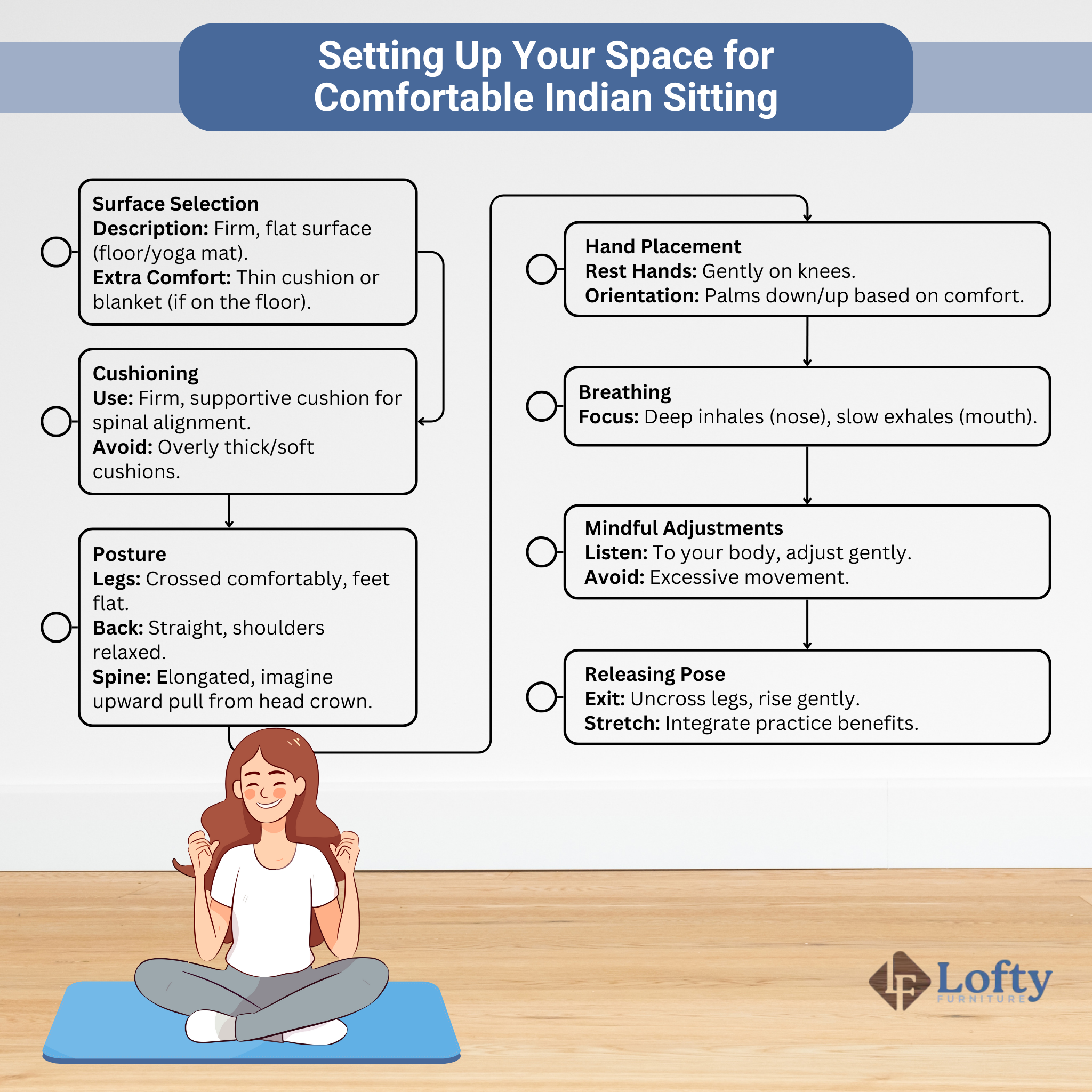
Gradual Incorporation
It is important to remember that this practice may vary across cultures, so it is essential to approach it with respect and understanding.
Gradual incorporation means starting slowly and gradually increasing your time in this position. This allows your body to adjust and prevents discomfort and pain.
Here are some practical tips for a smooth transition:
- Start with short periods of sitting Indian style and gradually increase the duration.
- Listen to your body.
- Take breaks if needed.
- Use cushions or props for support if you experience physical limitations.
- Try different variations of sitting positions to find what works best for you.
Remember, everyone’s body is unique, so be patient with yourself as you explore the benefits of sitting Indian style.
Addressing Common Concerns
If you have physical limitations that make it challenging to sit in the Indian-style position, there are modifications and alternatives you can try. Addressing any discomfort or health effects that arises while sitting in this position is important, as it could be a sign of an underlying issue.
Physical Limitations
Addressing physical limitations while sitting in Indian style involves adapting the posture to accommodate your needs and comfort. If you experience knee discomfort, consider placing additional support under them. You can use cushions or props to create a comfortable surface for your knees to rest on.
If sitting cross-legged is challenging, you can start crossing your ankles instead. This position is often more accessible and still provides some benefits of sitting on the floor. Opt for a soft surface, such as a yoga mat or a rug, to sit on. This can provide more cushioning and reduce pressure on your joints.
If maintaining an upright posture is challenging, you can sit with your back against a wall for support. This can help reduce strain on your back and make the sitting position more accessible.
Discomfort and Pain
Sitting Indian style, while it may be uncomfortable for some, can actually provide several benefits when it comes to discomfort management. To alleviate any potential discomfort, ergonomic solutions such as cushion support can be employed. This helps to distribute weight evenly and reduce pressure on specific areas.
Incorporating stretching exercises into your daily routine can help increase flexibility and alleviate muscle tension. It is also worth mentioning that alternative sitting positions can relieve discomfort while still allowing you to maintain good posture.
Consider consulting with a healthcare professional, physiotherapist, or yoga instructor if you have specific physical limitations or health concerns.
Upgrade your workstation with an ergonomic chair that combines comfort, promoting appropriate posture, reducing tiredness, and contemporary style.Shop modern ergonomic office chair now.
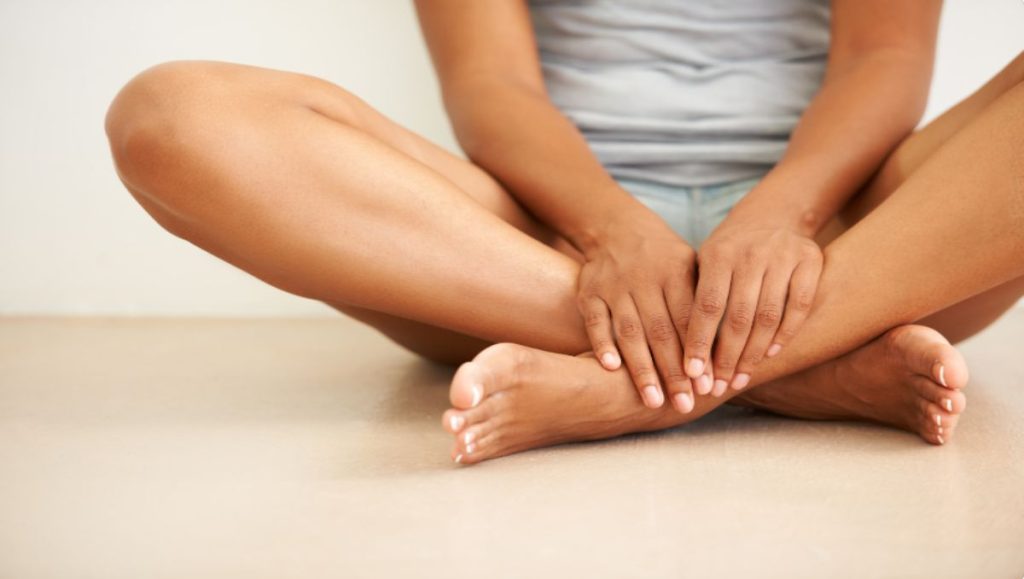
Sitting Indian Style: Potential Risks to Consider
While sitting Indian style offers a myriad of benefits, it’s crucial to approach this posture with awareness and respect for your body’s individual limitations.
1. Knee and Ankle Strain
Sitting Indian style can stress the knees and ankles, especially if hip mobility is limited, causing strain on inner knee ligaments. People with conditions like osteoarthritis or ligament laxity are more vulnerable, so it’s important that the hips are more flexible than the knees to reduce pressure.
2. Sciatica or Lower Back Issues
Proper lumbar curve support is key when sitting cross-legged, but tight hip flexors or weak core muscles can cause the lower back to round. This can stress spinal discs and irritate the sciatic nerve, especially in those with existing back issues.
3. Circulatory Issues
While brief compression of leg vessels is usually harmless, individuals with conditions like DVT or varicose veins should be cautious. To avoid complications, it’s best to shift positions regularly and stop if numbness or tingling occurs.
How Does Sitting Indian Style Compare to Other Sitting Positions?
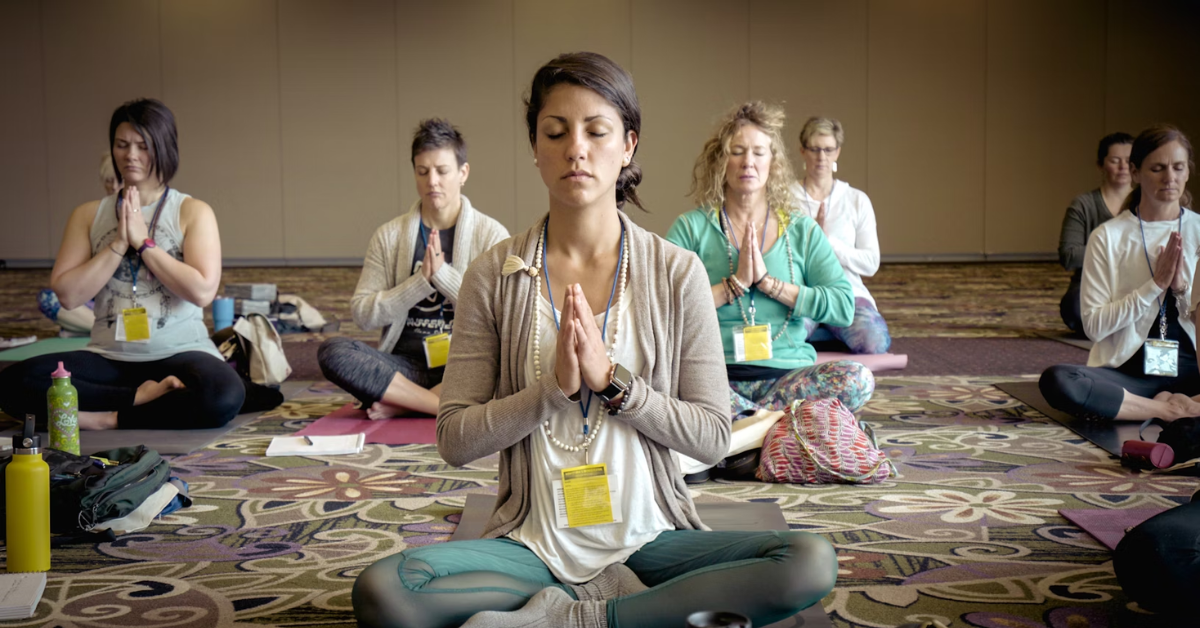
Sitting postures have been integral to various cultures, reflecting traditions, customs, and even spiritual practices. Among these, the Indian sitting style holds a unique place, known for its association with meditation, yoga, and cultural significance.
In Japan, Seiza sitting is prevalent, where individuals kneel on the floor with the tops of their feet flat and the buttocks resting on their heels. This position promotes an upright posture, commonly observed in Japanese tea ceremonies and martial arts, reflecting cultural values of humility, respect, and mindfulness.
Like Indian-style sitting, the Burmese sitting posture also involves sitting on the floor with legs uncrossed and feet flat. This position is frequently used in Buddhist meditation, providing a stable and comfortable alternative to the cross-legged postures in Indian traditions.
Each sitting style brings forth distinct cultural significance, offering a glimpse into the values and practices of the respective regions. While Indian-style sitting is deeply rooted in spirituality and tradition, Seiza and Burmese sitting positions reveal unique insights into the diverse ways communities around the world approach the act of sitting.
Ergonomic Insights and Modern Adaptations
These days, ergonomics isn’t just about office chairs and standing desks. It also includes how we sit on the floor. More experts, like occupational therapists and posture coaches, are starting to see the benefits of traditional positions like sitting Indian style for improving core strength and pelvic alignment.
When done with proper support and a little awareness, sitting cross-legged can activate your stabilizing muscles and help maintain the spine’s natural curve. That’s something we often lose with long hours in regular chairs.
To make floor sitting more accessible, modern tools like ergonomic floor chairs, padded meditation cushions, and foldable kneeling chairs are now widely available. Fitness and wellness professionals often recommend these for people who spend a lot of time at desks and want to improve their posture and mobility.
Ready to transition from the floor to a more supportive workspace? Explore our range of premium ergonomic office chairs designed for ultimate comfort and spinal health.
Beyond Posture: The Holistic Rewards of Sitting Indian Style
While the Indian style of sitting can provide physical benefits like improved flexibility and posture, little scientific evidence supports its mental or emotional wellbeing claims.
It is important to remember that everyone’s body is different, and what works for one person may not work for another. So, instead of blindly following trends, listen to your body and find a sitting style that truly brings you comfort and happiness.
Frequently Asked Questions (FAQs)
Is sitting Indian style bad for your knees or hips long-term?
Sitting Indian style isn’t inherently bad for the knees or hips—in fact, for many, it promotes joint flexibility and encourages proper posture. However, individuals with pre-existing joint issues (like arthritis, hip impingement, or meniscus injuries) may experience discomfort or strain if sitting this way for prolonged periods.
Can children benefit from sitting in this posture?
Yes, children can benefit significantly from sitting Indian style. It helps develop core strength, balance, and hip flexibility at an early age. Pediatric occupational therapists often recommend floor sitting to support better posture and sensory regulation.
How long should I sit Indian style to see benefits?
You don’t need to sit for hours to feel the benefits. Even 5–15 minutes daily can improve posture awareness, flexibility, and focus—especially if paired with mindful breathing or stretching.

Great…
Great!!!